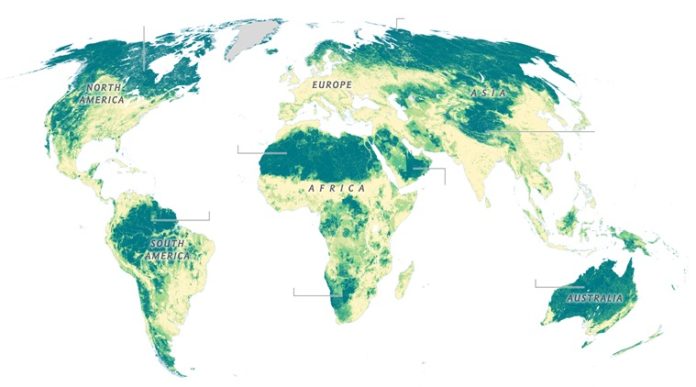New Delhi (NVI): If you want to know where in the world you can find a place that has not yet been transformed by agriculture, infrastructure, or settlements, then this newly published map by a team of researchers may help you.
The map, published on June 5 in the journal Global Change Biology, knits together four independently developed models for determining where humanity leaves its fingerprints, each using different indicators of activity, according to a report by the National Geographic.
According to scientists, the newly created map reveals the “wildest” places on Earth—places where humans have the lowest impact. The findings could be used to support the push to set aside half of Earth for nature to flourish and keep it protected from human imprints, as per the researchers.
The four independently developed models used for creating the map use human population, built-up areas, and cropland as inputs, but then they start to specialize, reports the National Geographic.
Based on the findings, all of the maps agreed that about half of Earth shows “low” human impact, and about half of that — a quarter of the ice-free surface of the planet — could be described as “very low” human impact.
Lead author Jason Riggio, a spatial ecologist at the University of California, Davis, hopes the map can bolster the case for making the goal of protecting half the planet by 2050 official at the next meeting of the Convention on Biological Diversity, scheduled for 2021.
Furthermore, while preserving largely untouched “wilderness” is an important goal for many, it isn’t always where the most plant and animal species are.
Globally, the tropics have many more species than the ecosystems closest to the poles, but the tropics also have a lot of people, according to Maria Dornelas, an ecologist at the University of St. Andrews in Scotland.








